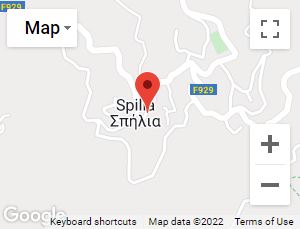Foundation
The history of Spilia and Kourdali begins in the 16th century AC. During this century the church of Virgin Mary Chrysokourdaliotissa was built, that was the center of the monastery that was unfolded around it. During this season there were built also some other monasteries in the region, and various small communities were founded on the mountains of Troodos. Here they found safety from the chase of the Francs initially and the Turks afterwards. Indicatively I report, that from the village of Kourdali up to the village of Asinou 14 communities were found. The abbey in Kourdali appeared to have enough properties and as it was usually happening, outside the abbey, families were installed that worked in these properties. Thus slowly-slowly the village of Kourdali was created. Meanwhile the abbey was destroyed and collapsed except from the most precious part: the temple.
As time passed the village grow up and the residents acquired also their own properties. The community grow up because the small communities of the around regions were destroyed and enough of their residents resorted to the village of Kourdali. Because the valley of Kourdali is very narrow and it did not give any margins for growth, some people began to built houses one kilometer higher, in the region where the current village of Spilia is found, where smoother places and a more open horizon are found. Moreover from here, they could easily go to the valley of “Karydiou”(walnut), where they created fortunes.
Spilia took their name from the fact that in the western side of the village Roman graves were found (“spilioi” as called by the residents).
As time passed, Spilia were evolved into a bigger community from Kourdali. It appears that around 1850, the village was having a great growth. During this season the church of Agios Antonios was built.
The two villages reached their biggest acne around in 1960. Then Spilia had 470 residents and Kourdali around 85. The municipal school of Spilia had 80 children and that of Kourdali 30. At the village of Spilia there were five groceries, two tailor shops, four shoe shops, four cafes etc.
A lot of men worked in the around mines of Asbestos, Chromiou and Foukasa and enough of them as lumberjacks, at the three contractors of the community that undertook the cutting of pine trees in the around forests. The women worked in their properties and practiced simultaneously some livestock farming with goats, pigs and poultry.
Αndreas Chrysanthou
24/04/04
Participation in the national fights
The attendance of the community Spilia-Kourdali in the national fights, begins with the Greek-Turkish and then the Greek-Bulgarian war the year ’12-’14, in which five residents participated. In the Bulgarian war Chrysostomos Ierides lost his life. In the Second World War, roughly 30 residents participated. Some of them took part in the war at Greece. The brothers Christodoulos and Zenonas Chadjitheocharous were taken as captives in the German camps. Costas Tellalis took part in both World Wars as officer of the British army.
During the EOKA fight all the residents of the two villages were involved. The leader of the fight, Georgios Grivas Digenis was entertained for two months at the villages. With the help of the residents of the community, it was created a cluster of three dens with deposits, garrisons and spaces of exercise, where up to thirty rebels were entertained. The cluster remained in the history with the name “Limeria” and is the only one that was created during the Fight. The dens were directed personally by Digenis up to the epic “Battle of Spilia” on 11 December 1955, at which Gregoris Afxentiou by causing confusion with his military brain to the English troops, led them kill themselves with 15 persons dead. It was the battle having the greatest number of dead people.
Climax of the attendance of the communities Spilia-Kourdali in the fight of EOKA, was the sacrifice of the fighters Andreas Patsalides, Costas Anaxagora, Alecos Constantinou and Panagiotis Georgiades at Kourdali. The four fighters were killed in the house of Andreas Patsalides on the 20th of June 1958, while they were practicing in the use of explosive matters, prepared to sabotage the British troops.
During the Turkishcypriot Mutiny, Andreas Agesilaou and Michalakis Kakoullis lost their lives in accidents. During the Turkish invasion in 1974, Andreas Neocleous lost his life and Loizos Koukkoulis became a missing person.
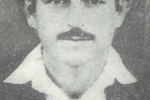
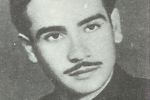
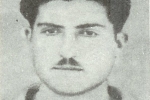
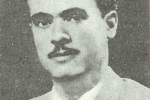
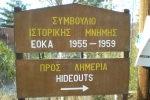
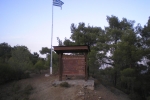
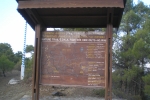
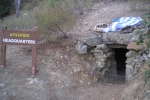
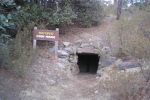
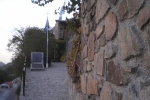
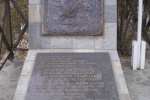
Αndreas Chrysanthou
24/04/04
Attendance in social events
Costas Tellalis from Kourdali participated in the first Olympic Games of the newer season that took place at Athens in 1896. In 1931 it was founded by the head of the Spilia village Loizo Kasino, the schoolteacher Clearcho Kyriakide and others, the Coop Bank of Spilia-Kourdali. In 1935 the community of Spilia built its municipal school, a very beautiful traditional building on the hill that dominates the community. In 1950 the athletic club “Aris” was founded and since then it plays a leading part in athletic and national events.
In 1970 the new temple of Agios Antonios (Spilia) was finished, a beautiful stone built temple, big enough to accept the deeply religious brothers of the communities Spilia-Kourdali. For the building of the temple, 25 years of fights were required by the entire community.
During the Turkish invasion in 1974, Spilia-Kourdali accepted thousands of refugees. All the houses opened the doors and their cellars, in order to accommodate and nourish the painful brothers.
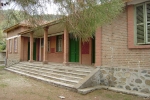
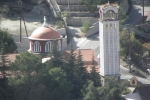
Αndreas Chrysanthou
24/04/04
The decline
From 1980 it begins for the two communities a rapid regression. The refugees initially and the residents then, abandon the communities of Spilia-Kourdali. The reason for this was the lack of work in the region. The mines of the region close the one after the other and the logging is limited. The government left the region without support, without works and people moved to the cities in order to work and live. In 1986 the Municipal School was closed. Life in the community lost its liveliness.
In 1987 the emigrants of the community with leader and first chairman the professor Andrea Chrysanthou, they founded the Emigrants Association in order to join their forces for the maintenance of the history and the tradition of the community and also to help the community to grow up again.
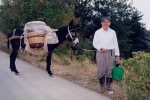
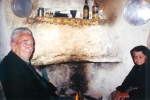
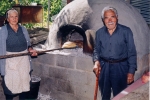
Αndreas Chrysanthou
24/04/04
The current condition of the community
From 1990 emigrants and foreigners express a big interest in order to acquire a rural house in Spilia-Kourdali. Some of them buy traditional houses and renovate them while some others build their own rural houses. The marvelous natural environment, the most beautiful climate, the easy access to Nicosia and Limassol, but also the beauties of the community and the around region, the absolute quietness and calm, attract many people that wants to go away from the stress and the dirty environment of the cities.
During the weekends, the big religious feasts, Easter and summertime, Spilia-Kourdali become alive again. The church, the community councils and the organized institutions of the community organize rich cultural activities for amusement and entertainment.
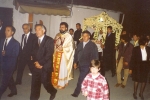
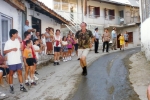
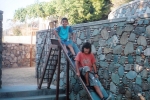
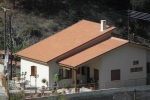
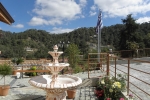
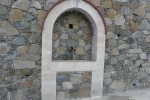
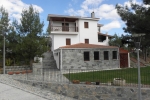
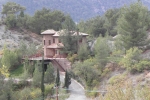
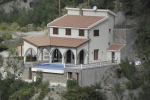
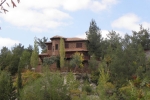
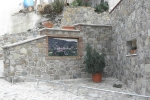
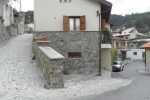
Αndreas Chrysanthou
24/04/04
Ruined Settlements
Around Spilia-Kourdali there are evident traces of the following settlements which were abandoned. A) “Karydi” where there used to be the church of Agios Georgios. This settlement is now recreated with country houses whereas the church has been rebuilt.
B) “Anemourka” where there used to be the church of Agios Ioannis Prodromos, the ruins of which are preserved.
C) “Pyrkatis” where there used to be the church of Archangel Michael, the ruins of which are preserved as well as the ruins of many houses.
D) “Karterouni” where there used to be the church of Agios Georgios. The ruins of the church and of many houses are preserved.
E) “Freritzi” where there used to be the church of Agios Ioannis Lambadistis, which had been painted with iconographies. Both the ruins of the church and the settlement are preserved.
F) “Asproi” where there used to be the church of Agia Paraskevi, the ruins of which are preserved.
Αndreas Chrysanthou
24/04/04

